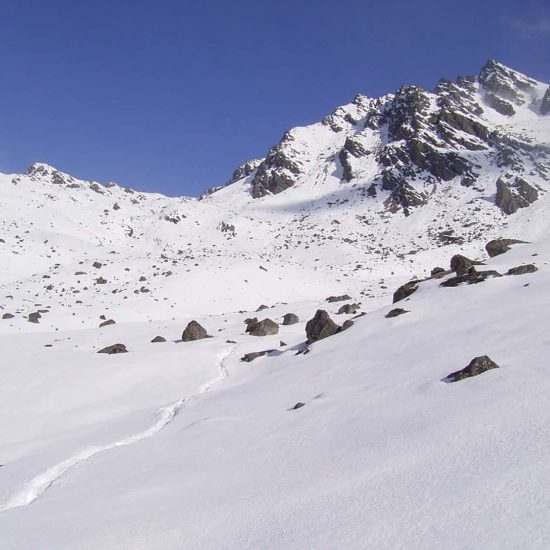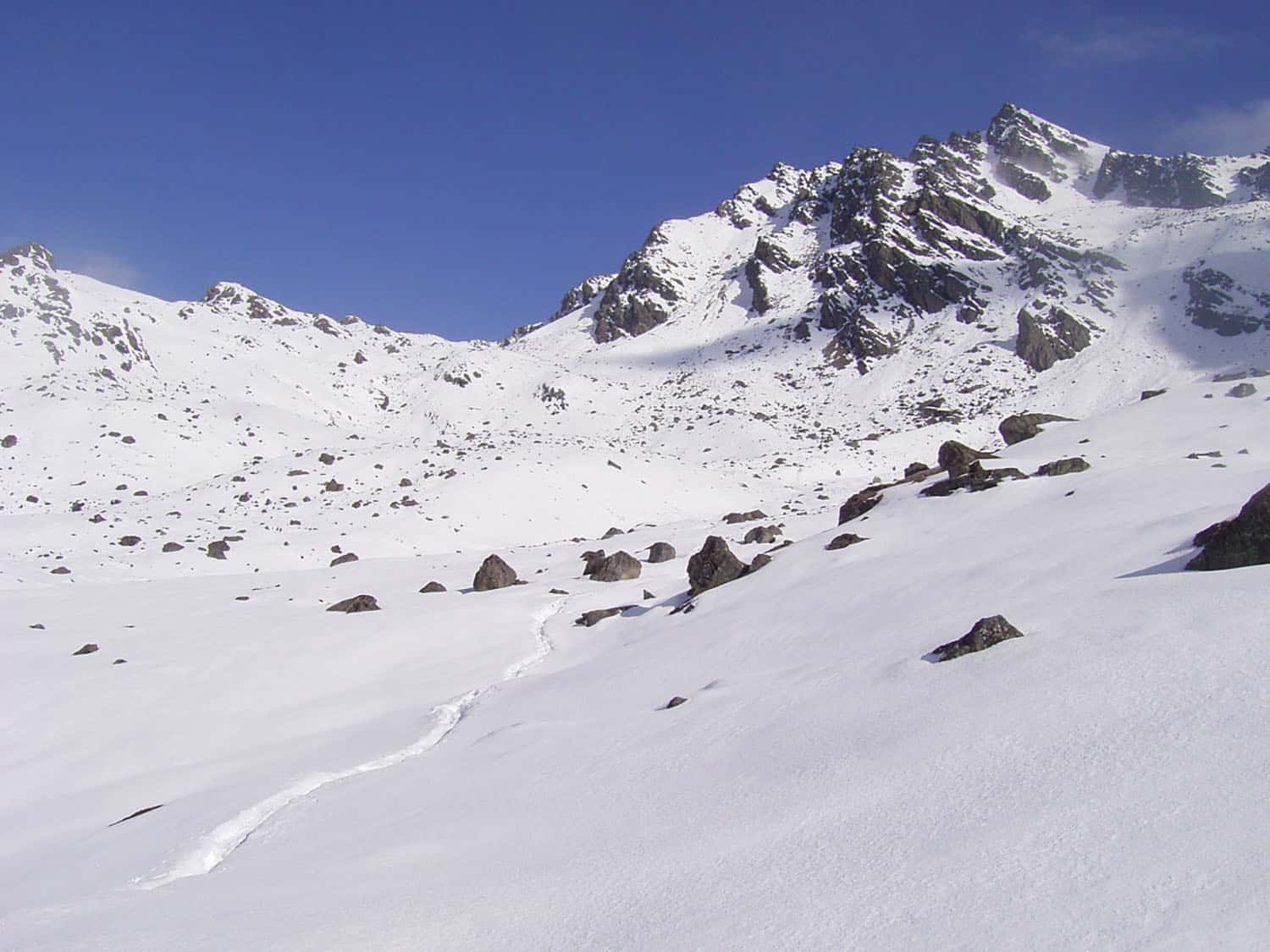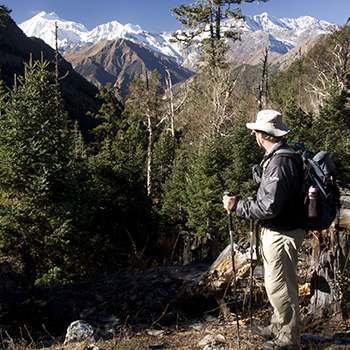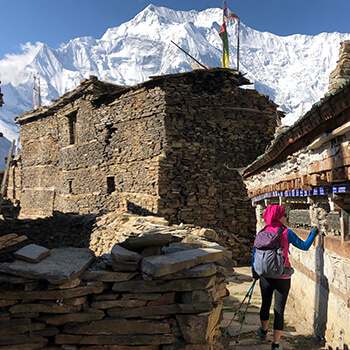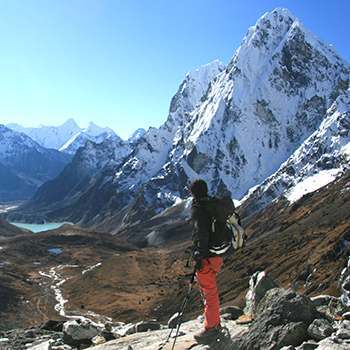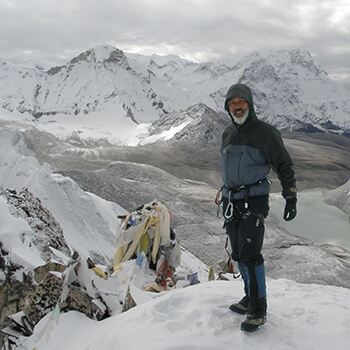Gosainkund Lake
Gosainkund Lake Trek
To the north of Kathmandu is pure Himalayan magic, Gosainkund Lake. Traditional cultures, great views, well maintained trails, plenty of wildlife, sacred lakes, rarely another trekker in sight. Plus one of the best wildflower displays in Nepal during the spring season.
Key points:
- Trekking grade: Grade 3
- Duration & distance: About 9 days total; days not more than 20km per day
- Gradient: Short steep sections
- Quality of path: Formed & rough tracks, some obstacles
- Quality of markings: Signs at beginning, end and major intersections
- Experience required: Some walking experience required
- Walking times: Less than 6hrs a day
- Steps: Occasional steps
- Highest point: 4462m
- Best season: Mar-May and Sep-Dec
- Accommodation: Camping and basic teahouses
- Recommended map: NP105 GHT Series Langtang and Helambu, Himalayan Map House, 2017
- Recommended Guide Book: Nepal Trekking and the Great Himalaya Trail, Trailblazer, 2020.
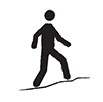
GRADE 3
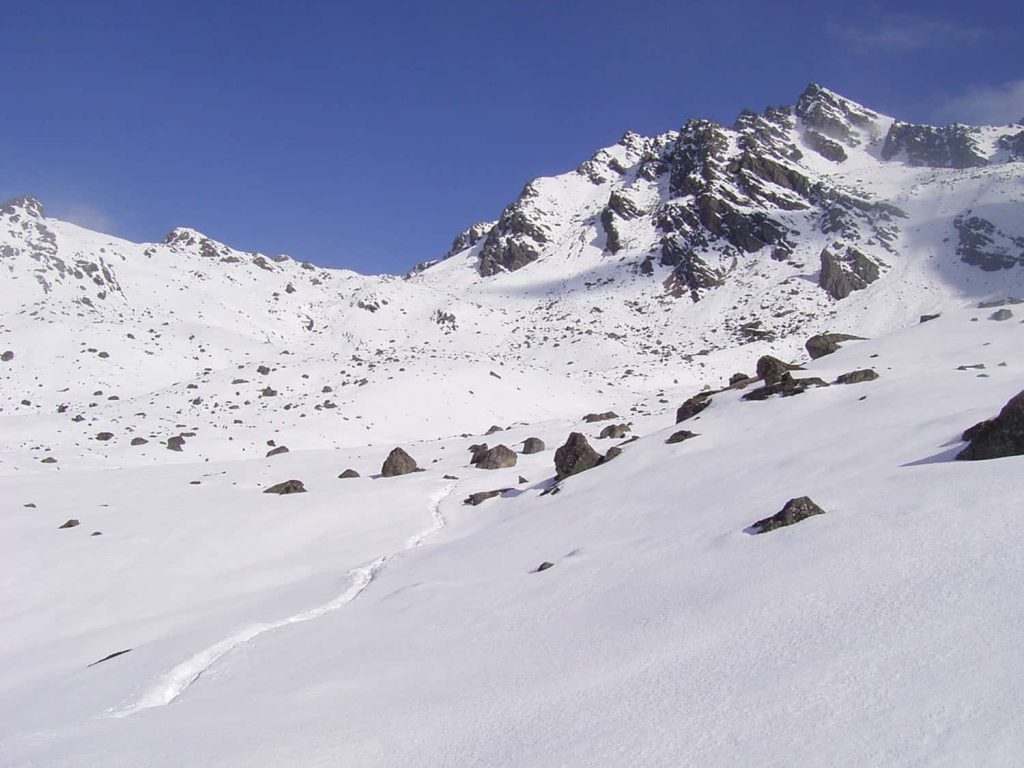

When to Trek to Gosainkund Lake?
To trek out of the Kathmandu valley to Gosainkund Lake is a step back in time, to an age when all expeditions started from the valley rim. The feeling of walking away from Nepal’s capital is unique and it allows you to ‘grow’ into the trek. Once over the rim, you head for a mountain range that fills the horizon. To the main north–south route a series of interconnecting trails from the east and west offer an opportunity to trek to your heart’s content.
Gosainkund Lake tends to have a long trekking season from early October through to mid-February, and then re-opening in March until the monsoon begins in June. However, snowfalls are very common on Lauribina Pass throughout the year and trekkers should be careful not to become isolated on the higher trails. A major highlight is the magnificent rhododendron forests that bloom throughout April across the southern boundary of the National Park.
Gosainkund Lake Trek Permits
Established in 1976, Langtang National Park has a reputation for being well managed, where locals actively help to maintain park biodiversity and ecology. Human impact is limited but not absent as grazing is allowed in high pastures and permanent communities are permitted to exist in the heart of the Park.
As at August 2019, Rasuwa District (Tamang Heritage Trail) has a trekking permit of US$10 per person per week. Plus the Langtang National Park entry fee of NRs 3000 per person (foreigners), NRs 1500 (SAARC nationals) and NRs 100 (Nepali nationals).

Gosainkund Lake Route Options
Although it’s a long hike of nearly 3 weeks, it is possible to connect Gosainkund Lake with the holy lakes of Bhairav Kund and Panch Pokhari in the east of Helambu. However, you should be aware of sudden storms that can occur throughout the year. Storms and rough trails never deter the thousands of pilgrims who visit the lakes during the monsoon months. If you have the time, consider a one-day side trip to the summit of Shivapuri and spend a night watching the twinkling of Kathmandu’s city lights beneath a heaven full of stars.
Multiple daily bus services run from Kathmandu to Chisapani, Melamchi Gaon, Dhunche and Syabrubesi. An extensive new road network is under construction throughout Helambu and will include a Melamchi to Trisuli road via Kutumsang. All these roads are causing a great deal of forest damage and are unavoidable whether trekking east–west or north–south across the region.
How Much does the Gosainkund Lake Trek Cost?
To help you budget and plan, we’ve made a comprehensive costing explanation on How Much Does the GHT Cost? But here’s a simplified breakdown.
GHT Gosainkund Lake Trek for 9-days estimated costs:
- Solo as much as possible US$895.
- Twin-share with minimum guiding US$895 per person.
- Twin-share fully supported US$2,055 per person.
Do you have any questions about costs? Please Get in Touch for more details.

Customisation is Normal
Want to do things a little differently? Maybe take some extra time, or go a bit faster? Or avoid technical sections or combine with other trails? Every GHT trek is different and that changes the price, but please feel free to Get in Touch to ask questions and how to customise your own trek.
Bookings
Please note that www.greathimalayatrail.com does not handle bookings for treks. We are here to inform you about the trails and logistics, but you will need to book through a registered trekking operator in Nepal. If you would like an operator recommendation or feedback on a company you are already talking to, then please Get in Touch.
Your Impacts on the Gosainkund Lake Trek

Solo (Independent)
Gosainkund Lake is a low impact trek for the solo hiker with moderate social impacts and relatively low GHG and waste impacts.
Consider taking a little extra time to explore side trips or stay a little longer to improve your social impact.


Twin Share (Independent)
Gosainkund Lake is a low impact trek for small groups with moderate social impacts and relatively low GHG and waste impacts.
Consider taking a little extra time to explore side trips or stay a little longer to improve your social impact.


Camping (supported)
A high social impact is from having a camping crew who will buy local products and services, but it increases your footprint.
Despite the good social impact, it is hard to justify camping on this trek.

For more information about social, Green House Gas and waste impacts of treks, see The Impact of your Trek.
-
Destination
-
DepartureKathmandu
-
Dress CodeLow and mid-altitude alpine clothing and camping equipment required
-
IncludedGosainkund Lake
-
GradeGrade 3
-
Idea Date Range15/04/2021
-
Style of TrekTeahouse




